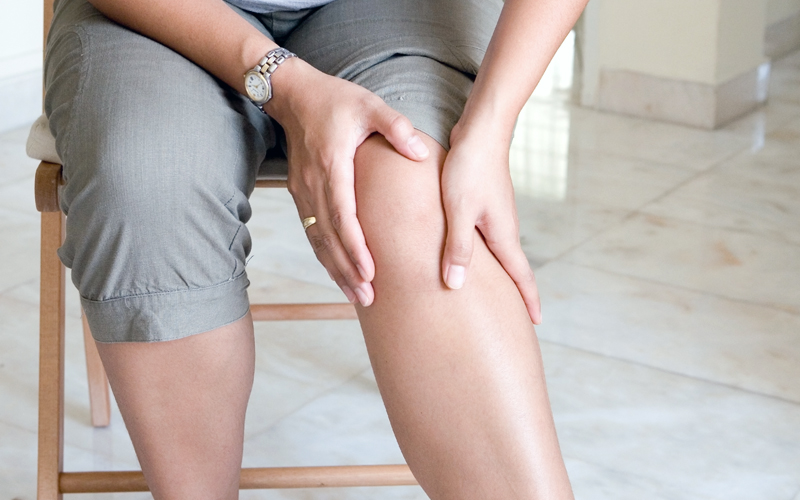
by guest blogger Isaac Eliaz, MD, MS, LAc, integrative medicine pioneer
The symptoms often come at the worst possible time: at night when you’re trying to sleep. You feel a throbbing, itching, or uncomfortable sensation in the legs that escalates until you feel an overwhelming need to move them. Shifting the legs relieves the discomfort temporarily, but the symptoms soon return, and sleep is elusive.
This is restless legs syndrome (RLS), classified as a sensorimotor disorder that may affect as much as 10 percent of the U.S. population. The condition is more common in women, and may even affect a million school-age children. People often experience RLS when they’re trying to sleep or just relax. It can also strike during a movie or a long flight. And for many people with RLS, symptoms are worse during the winter.
Researchers are not sure what causes RLS, though it’s suspected that genetics play a significant role. There’s also evidence that RLS is caused by problems with the neurotransmitter dopamine, which helps govern muscle movements. Reduced dopamine is also an issue for Parkinson’s patients, resulting in numerous neuromuscular symptoms. Some women also experience worsening RLS during pregnancy or with other hormonal changes.
At present, there are few treatments for RLS. Medications that boost dopamine have been shown to provide some relief; however, they can be problematic and cause multiple side effects with long-term use. There are also treatments to lessen symptoms, such as painkillers to manage the discomfort and sedatives to help patients sleep. Again, a long list of potential side effects comes with these Band-Aid approaches.
Heeding a Warning?
While RLS is uncomfortable, it may not seem that bad on the surface. However, the condition can be associated with a number of far more serious health issues, such as kidney failure, diabetes, and peripheral neuropathy. Other disorders associated with a high occurrence of RLS are attention-deficit hyperactivity disorder (ADHD) and multiple sclerosis. Because RLS is often found in conjunction with other conditions, it is underdiagnosed and, therefore, frequently left untreated.
People with RLS may also be at a higher risk for heart disease. One study published in the journal Circulation, showed that women with RLS had a significantly higher risk of cardiovascular disease. Other studies have confirmed an association between RLS and heart disease. In addition, men with RLS may have more risk of lung, metabolic, and immune conditions. One study showed men with RLS have a 39 percent increased risk of early mortality.
Does RLS cause these conditions? Probably not, but they seem to share underlying factors, such as poor circulation, nervous system imbalances, and inflammation. From that standpoint, RLS may serve as an early warning sign, cluing us in to the presence of more serious conditions.
Handling RLS
One commonly recommended supplement for RLS is iron, as a deficiency can create imbalances in the brain’s dopamine system. Other minerals, such as potassium and magnesium, may also prove helpful, particularly for the nervous system. One study at the Mayo Clinic found that the RLS patients in the sample had donated blood several times, suggesting there may be link between blood donation and iron deficiency. With iron being a strong pro-oxidant however, it’s advisable to have your doctor check your iron and iron storage levels before starting any iron supplementation.
Also, be careful if you’re taking acid reducers, such as Prilosec or Prevacid, which can hamper the body’s ability to absorb iron and other nutrients. Additionally, there is a reported link between RLS and antidepressants, such as Prozac and Zoloft. It’s a good idea to limit caffeine and alcohol and to plan a strategy for quitting if you smoke cigarettes.
Strengthening Circulation
There are a number of simple ways to boost circulation. Simply standing up and walking more frequently can work wonders. You can also stretch, touch your toes, and practice deep breathing. Strengthening your circulation is especially important for people in office jobs, as sitting for many hours is known to be bad for your health on a number of levels, specifically cardiovascular.
I particularly recommend an ancient and extensively researched Tibetan herbal formula, which has been shown in clinical studies to support circulation and cardiovascular health, along with other benefits. The formula includes Iceland moss, costus root, cherubic myrobalan, and other more unusual botanicals. In addition to boosting circulation, the formula also supports cellular health and immunity and provides antioxidant protection, demonstrated in more than 40 years of published studies.
We’re still learning about RLS, so I would encourage people to keep an eye on emerging research. However, by combining moderate exercise and minor lifestyle changes, together with circulation-boosting formulas and essential minerals, people struggling from RLS may find significant relief.
Even better, by supporting circulation and cardiovascular health, they can help lower their risk for heart disease and other serious conditions.
 Isaac Eliaz, MD, MS, LAc, integrates Western medicine with his extensive knowledge of traditional Chinese, Tibetan, ayurvedic, homeopathic, and complementary medical systems. With more than 25 years of clinical experience and research, Dr. Eliaz has a unique holistic approach to the relationship between health and disease, immune enhancement, detoxification, and cancer prevention and treatment. For more health and wellness information, visit www.dreliaz.org.
Isaac Eliaz, MD, MS, LAc, integrates Western medicine with his extensive knowledge of traditional Chinese, Tibetan, ayurvedic, homeopathic, and complementary medical systems. With more than 25 years of clinical experience and research, Dr. Eliaz has a unique holistic approach to the relationship between health and disease, immune enhancement, detoxification, and cancer prevention and treatment. For more health and wellness information, visit www.dreliaz.org.




Very good information to have. Thank you for sharing.
I had RLS for many years and also had low iron as determined by blood tests.
Once I discovered the link I started taking iron supplements. I take 25 – 50 mg/daily and my iron stores are now much better and in the normal range. My RLS is reduced about 90% so this has been a cure for me.
I’m 62 and otherwise in good health. I have had M.S. for 25 years and this also is related to RLS.
I have found many people I know with the problem including ADHD diagnosed individuals have been hellped with magnesium. I have given several people a drinkable magnesium brand name “CALM” for the problem and everyone has had marked relief. I drink this and it also helps with insomnia. Perhaps there is a deficiency that causes the symptoms?
I didn’t know there could be serious conditions attached to the symptoms. I’m not a doctor.
Two years ago I began experiencing progressively worsening restless leg symptoms. Upon researching I discovered it might be a dopamine issue as with Parkinsons and the limitation of anti depressants available to Parkinson patients due to the effect of anti depressants on dopamine , I realized that my RLS symptoms increased tremendously since I started taking venaflaxine, Effexor. When I discontinued this medication, it took over six months, my restless leg symptoms are now very infrequent and mild. Addtionally I discovered heart arrhythmias are a side effect of venaflaxine and other anti depressants .
I had RLS from childhood. I am 42 now and no longer suffering from this affection for 5 years. What helped the most was getting rid of parasites that are very common and under diagnosed, as well as candida albicans. Both secrete some toxic chemicals that create restless leg. Supplements such as molybdenum and ornithine are paramount to relieve the symptoms because they help the liver to clear the body. Try them, you will feel the relief in one hour if adequate dosage. Avoid absolutely wine and ham and other food that contain sulfites and nitrites. Eat paleo and you will be free of RLS !! Hope this helps people who really want to be in good health and are ready to take care of themselves naturally 🙂
Vitamin B1………. that’s what I take when I get restless legs. 1oo mg and then another 100 mg if the first one didn’t help after 15 minutes or so. That always works for me.
This is in reply to Sonia’s comment.
I agree that parasites, candida, fungal infections and dysbiosis can cause high ammonia levels which has been linked to RLS, but respectfully disagree that going Paleo is the answer.
Paleo means more protein, which will elevate ammonia levels in many people.